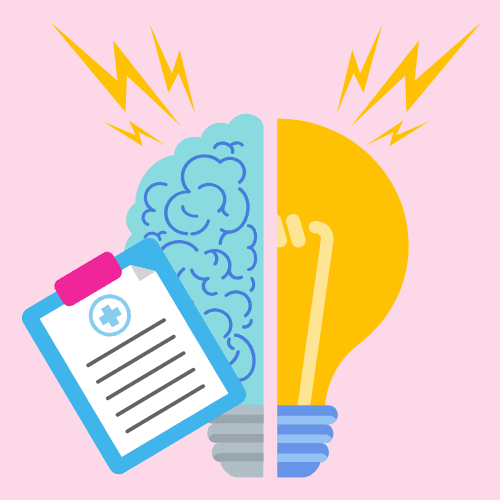The population prevalence of ADHD is 3-5% in children and research studies suggest that approximately 60% will continue experiencing full symptoms of the disorder into adulthood. Recent such research evidence has shown that 1.2% of children with ADHD and 0.9% of adults access care for ADHD. This suggests that the disorder is under diagnosed in the UK.
ADHD affects both boys and girls. In childhood, at least four times more boys than girls receive a diagnosis of ADHD. However, by adulthood, this evens out to a one to one ratio. The most common explanation for this reflects the influence that gender has on the presentation of symptoms – with girls more likely to be inattentive, not being as disruptive in the classroom but also not listening or learning.
Screening tools are Adult ADHD Self-Report Scale (ASRS-v1.1)
QbCheck and QbTest are equivalent tests, designed by a team of clinical psychologists to objectively measure the three core ADHD symptoms through in-clinic and remote ADHD testing.
Advantages of diagnosis
The role of a diagnosis is to quantify the individuals’ symptoms and impairments and to ensure they are directed towards the right treatment pathway.
Diagnosis allows access to appropriate health and social care. Research studies have shown that after having received a diagnosis individuals experience lower societal and family borne costs.
While schools and parents rarely gain additional resources as a result of the individual receiving a diagnosis, the label can be very beneficial in changing attitudes and perceptions.
It can also lead to special accommodations at school, such as extra time on tests which level the playing field so that ADHD students can better achieve their potential.
In general, receipt of treatment for ADHD can be protective of future risks such as poor academic performance, engagement in criminality or unemployment and can also enhance interpersonal relationships and quality of life.
ADHD Management
Environmental modifications
Environmental modifications are changes that are made to the physical environment in order to minimise the impact of a person’s ADHD on their day-to-day life. Appropriate environmental modifications will be specific to the circumstances of each person with ADHD and should be determined from an assessment of their needs. Examples may include changes to seating arrangements, changes to lighting and noise, reducing distractions (for example, using headphones), optimising work or education to have shorter periods of focus with movement breaks (including the use of ‘I need a break’ cards), reinforcing verbal requests with written instructions and, for children, the appropriate use of teaching assistants at school.
The most successful forms of ADHD treatment has been shown to be a combination of medication and behavioural treatments.
- Stimulant drugs are the most common type of drugs used to treat ADHD. They do not cure, but manage the symptoms and are often a long term solution. People with ADHD may decide to stop taking their medication if they do not like how they feel whilst on it. However, when this happens symptoms are likely to reappear.
- Unfortunately medication often comes with side effects such as insomnia, appetite suppression, light-headedness, nausea, twitches or increased blood pressure. The advantages of taking medication often outweigh the side effects. While the side effects may be unpleasant, they are relatively low risk and it is important to understand the beneficial impact (interpersonal or professional) that medication can have on reducing future risks.
How medication works. What is it trying to address?
- Stimulant medication works by increasing dopamine levels in the brain. It makes more dopamine available by reducing reuptake at the synaptic cleft. Increased availability of dopamine helps modulate attention, motivation and movement. It can also boost concentration and focus while reducing hyperactive and impulsive behaviour.
- Non-stimulant medications work on norepinephrine pathways and are considered when stimulants have not worked or are causing intolerable side effects.
ADHD medication is not one-size-fits-all. It may take a while to figure out which medication works and at which dosage. This can vary across individuals.
How ADHD medication affects neurotransmitters
| Stimulants |
|---|
| Main target: Dopamine, a neurotransmitter that plays a key role in motivation. It also helps control movement and emotional responses.Examples: Methylphenidates, (like Concerta, Focalin, Metadate and Ritalin), and amphetamines (like Elvanse).Usage: Stimulants are the most commonly prescribed type of ADHD medication. |
| Non-Stimulants |
|---|
| Main target: Norepinephrine, a neurotransmitter that plays a key role in executive functions like impulse control and getting started on tasks.Examples: Atomoxetine (Strattera) and guanfacine (whose mode of action is not yet fully understood but appears to have an indirect effect on norepinephrine).Usage: Non-Stimulants tend to be used if individuals don’t respond well to stimulants. They can be used or instead of stimulants. |
Please also see essential oils for ADHD.
If you need assistance, please contact the 111 Mental Health Helpline for 24/7 support.



